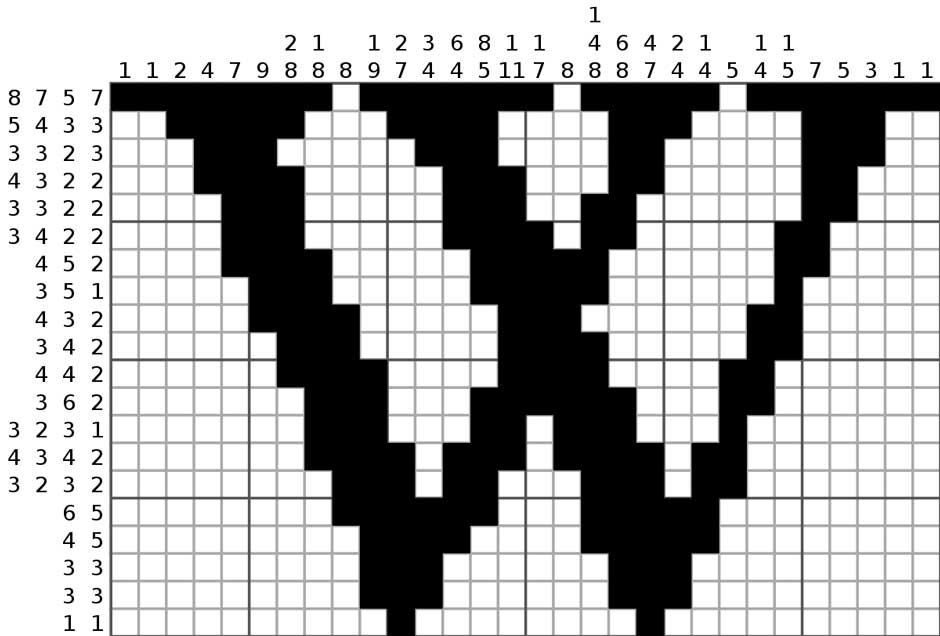A nonogram puzzle, a Griddler, picross, or paint-by-numbers, is a logic-based puzzle that involves filling in cells in a grid to create a picture. The grid consists of rows and columns; each row and column has a sequence of numbers representing the lengths of consecutive filled cells. These numbers provide clues about the grid’s arrangement of filled and empty cells.
To solve a nonogram puzzle, you need to use the given number sequences to deduce which cells should be filled and which should be left empty. By analyzing the overlapping clues from the rows and columns, you gradually determine the correct arrangement of cells and reveal the hidden picture.
How to Play a Nonogram Puzzle
Typically, nonogram puzzles start with a blank grid and a set of clues for each row and column. The clues indicate the number of consecutive filled cells in that particular row or column and the spaces between them. By applying logical deduction, such as elimination and reasoning based on the intersections of row and column clues, you can fill in the cells and eventually solve the puzzle.
Nonogram puzzles can vary in size and complexity, with smaller ones being easier to solve and larger ones offering more challenges. They are often found in puzzle books, magazines, and online platforms, providing an engaging and entertaining way to exercise logical thinking and pattern recognition skills.
Tips for Playing Nonogram Puzzles
Here are some tips to help you play a nonogram puzzle more effectively:
Start with the clues: Carefully examine the row and column clues provided. These numbers indicate the lengths of consecutive filled cells and can give you a good starting point for solving the puzzle.
Look for obvious moves: Begin by marking cells you can deduce with certainty. For example, if a row or column has a clue of “5” in a small grid, and the grid itself is only five cells wide, you can fill in all the cells in that row or column.
Use crossings and intersections: Focus on the intersections of rows and columns. By analyzing the clues that overlap at these points, you can often make deductions about the cells that should be filled or left empty.
Look for breaks and separations: Attention to clues indicating a gap or separation between filled cells. These can help you determine where empty cells should be placed.
Use logic and deduction: Nonogram puzzles are ultimately about logical deduction. Apply deductive reasoning to eliminate possibilities, identify patterns, and make progress in filling in the grid.
Don’t guess randomly: Unlike some puzzles, guessing randomly in nonograms can lead to contradictions and incorrect solutions. Rely on logical deduction rather than guesswork to ensure a valid solution.
Take breaks if needed: Nonogram puzzles can be challenging and require concentration. If you find yourself stuck or frustrated, taking a short break and returning to the puzzle later with a fresh perspective can often help.
Practice regularly: Like any skill, solving nonogram puzzles improves with practice. The more puzzles you solve, the better you’ll become at recognizing patterns and applying logical deduction techniques.
Finally, remember each puzzle is unique, and different strategies may be required for different situations. So, experiment with different approaches and find the best techniques for you.

